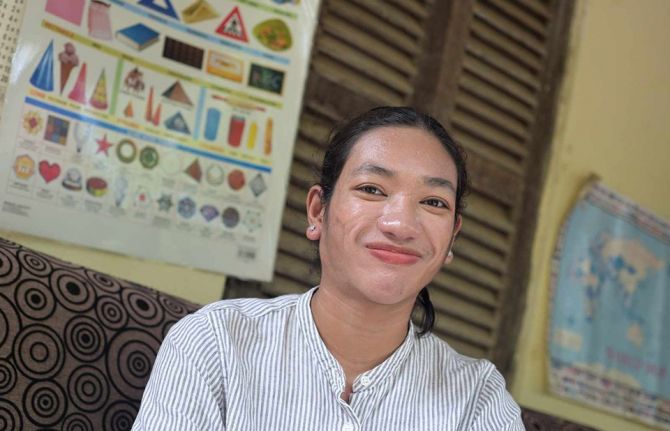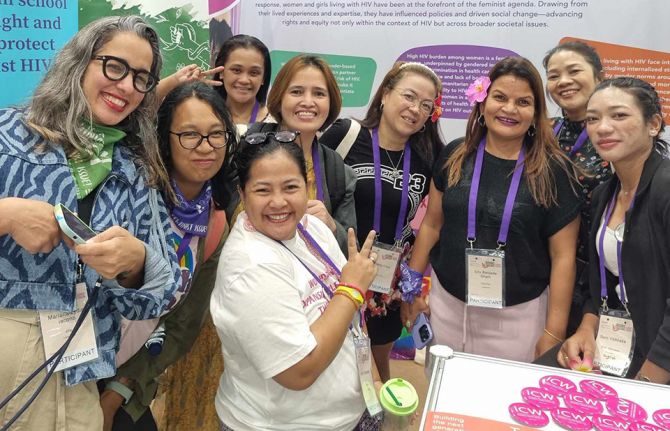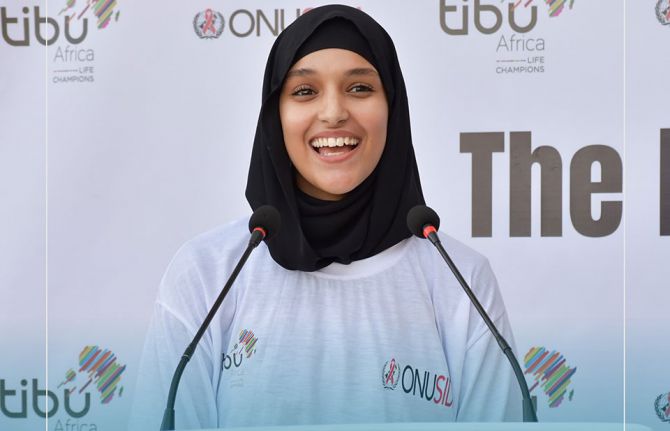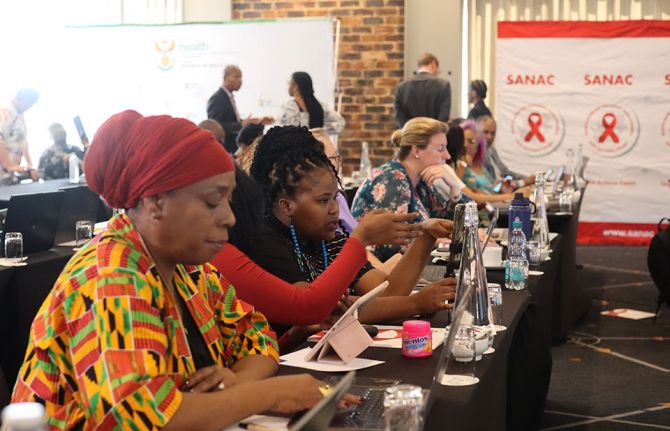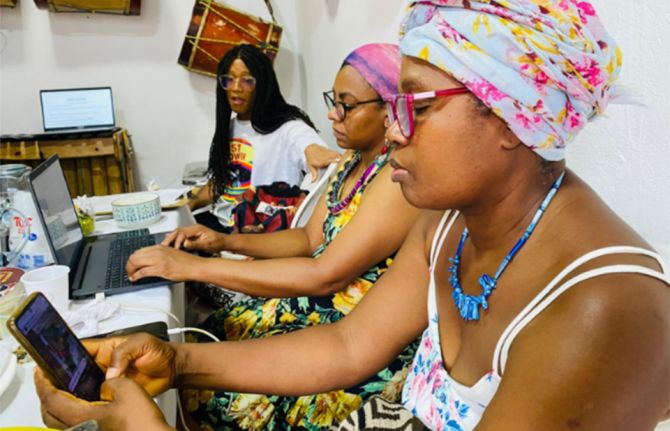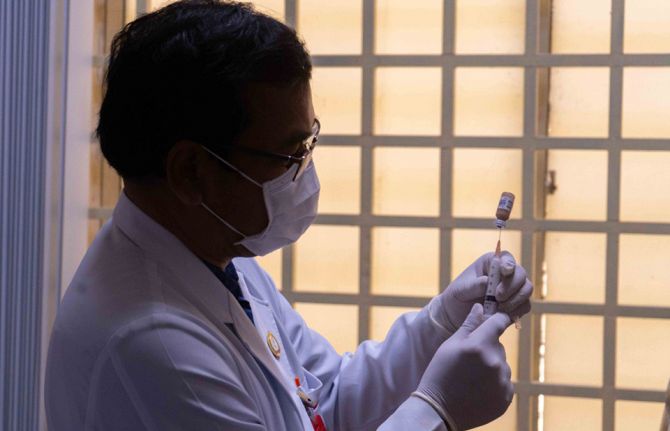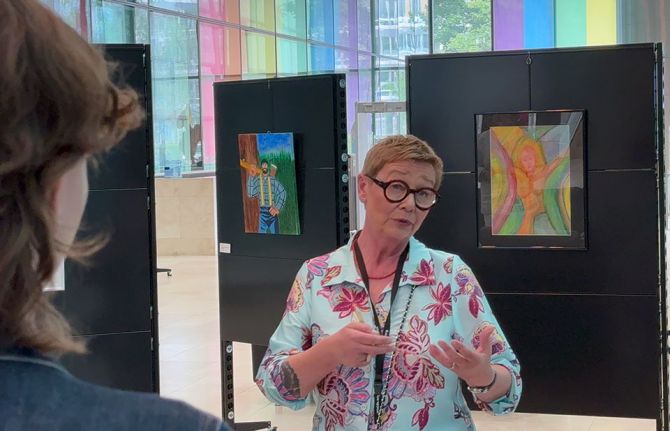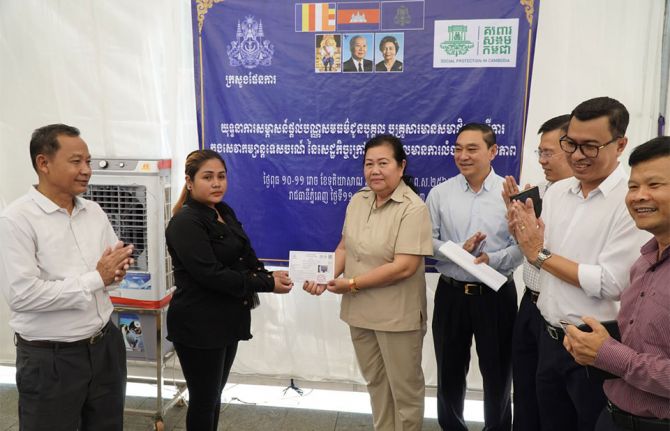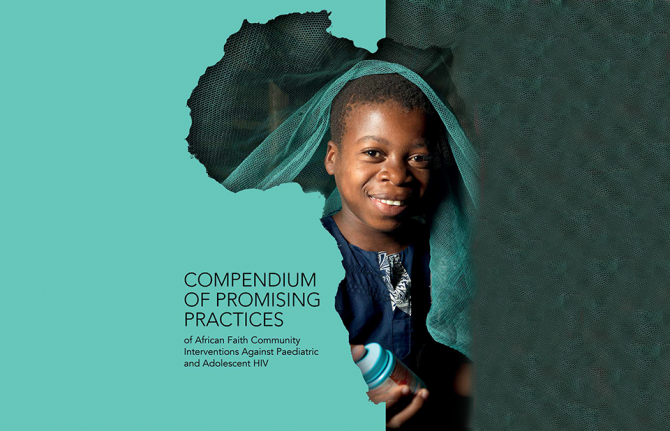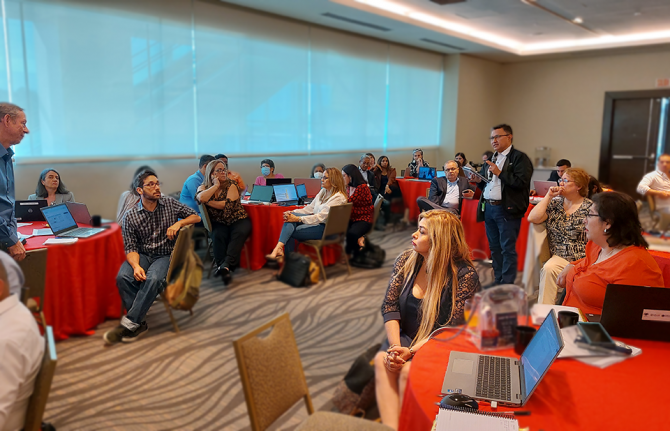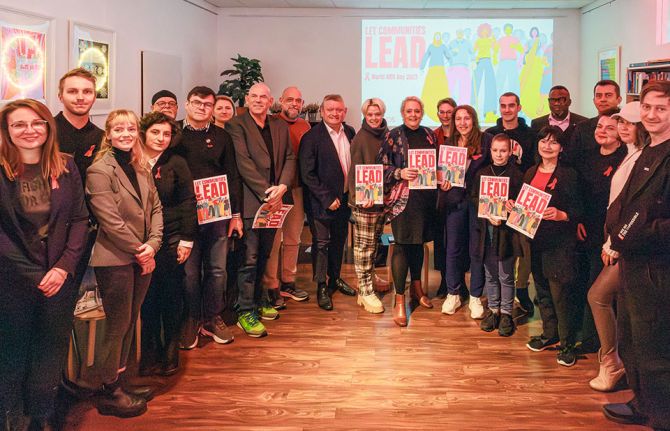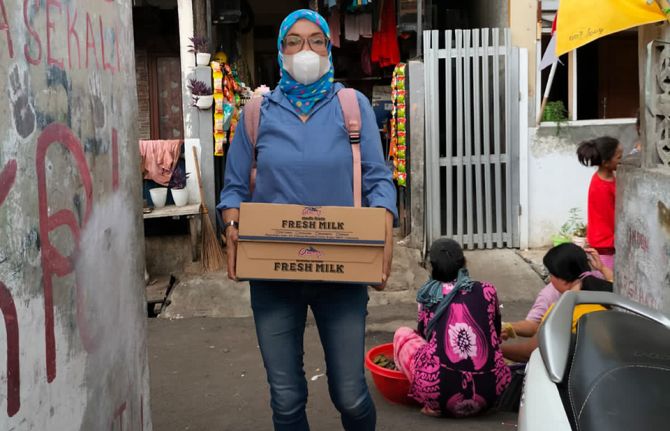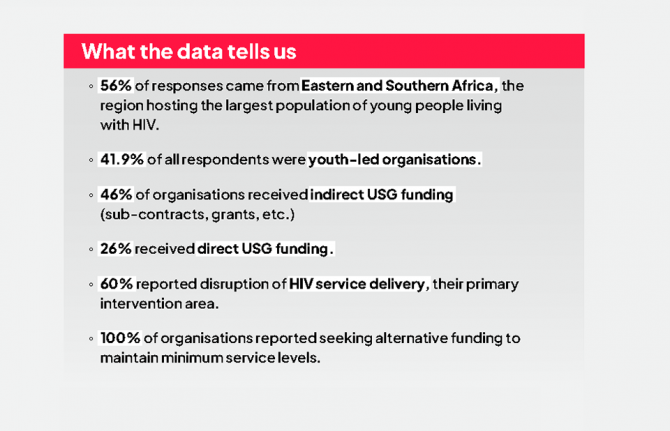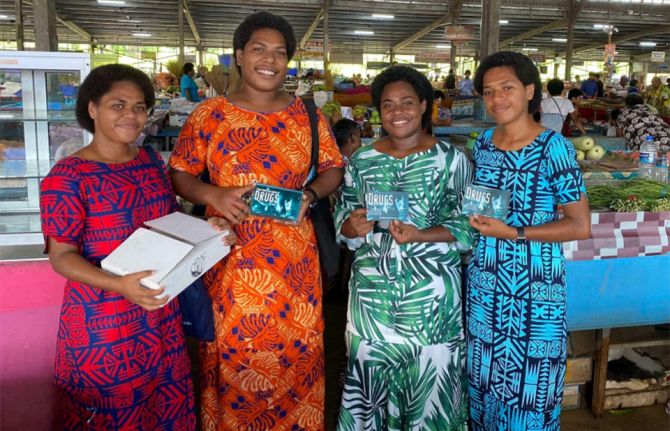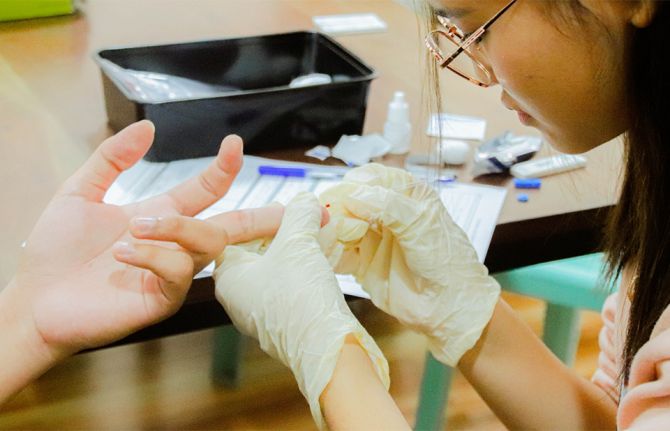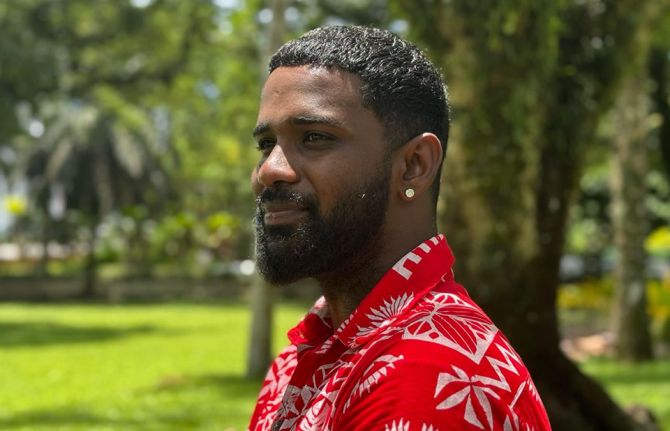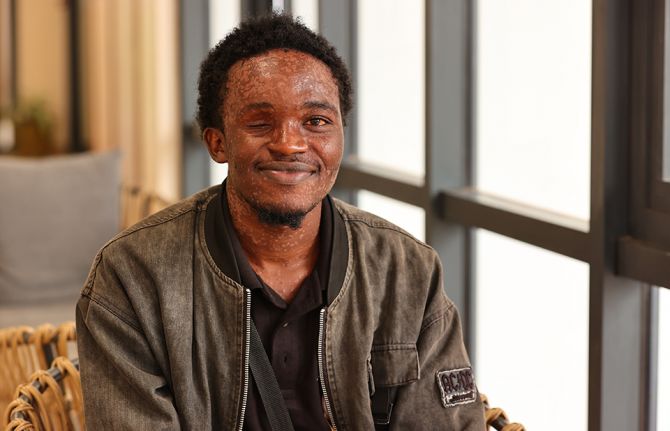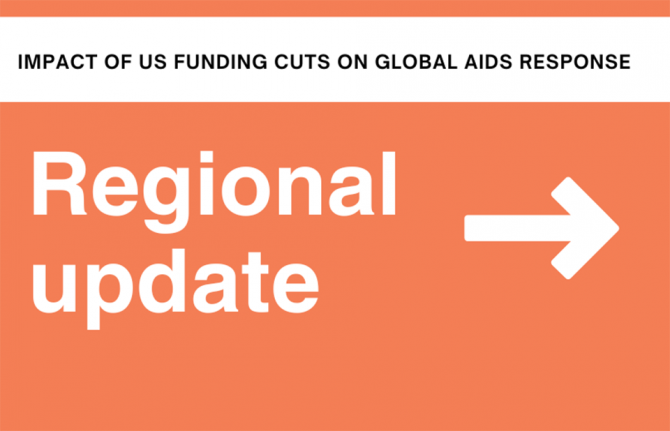
Feature Story
Highlighting sexual violence on International Women’s Day
05 March 2009
05 March 2009 05 March 2009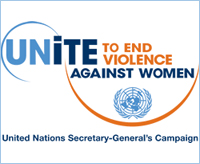
"Women and men: United to end violence against women" is the theme of this year’s International Women's Day which is observed at the United Nations on 5 March 2009 and celebrated internationally on 8 March.
Sexual violence, and the threat of violence, increases women’s vulnerability to HIV and in certain parts of the world is being used as a tactic of war.
UN Secretary-General Ban Ki-moon highlights this in his message marking International Women’s Day: “Violence against women is also linked to the spread of HIV/AIDS. In some countries, as many as one in three women will be beaten, coerced into sex or otherwise abused in her lifetime. Women and girls are also systematically and deliberately subject to rape and sexual violence in war.”
UNAIDS Executive Director Michel Sidibé is also unequivocal on the need to end this violence in his statement: “Violence, including rape and sexual abuse against women and girls should not be tolerated in any circumstances, be it in conflict or war or at home in our own communities.”
Sexual violence in conflict
Sexual violence in conflict has not been a high priority for security institutions and is often overlooked due to stigma and under-reporting. However, the trauma and terror of rape can wound as deeply as bullets and in areas with high HIV prevalence, women are also at risk of being infected with HIV.
Leo Kenny, Team Leader of UNAIDS Security and Humanitarian Response is convinced of the pressing need to address the issue sexual violence among the uniformed services: “While soldiers and uniformed service personnel have been perpetuators of violence against women, they have also been part of the solution and are potential key agents of change if the right programmes are put in place.”
“Educating and involving peacekeepers in addressing sexual violence is important as soldiers have influence among their peers both within the service and the wider community. By changing their perceptions and behaviours it can positively impact the larger population,” Mr Kenny added.
"Violence, including rape and sexual abuse against women and girls should not be tolerated in any circumstances, be it in conflict or war or at home in our own communities."
UNAIDS Executive Director Michel Sidibé
The women who survive sexual violence need access to comprehensive health and counselling services and, where necessary, HIV prevention, treatment, care and support. However the context of civil unrest can result in barriers to universal access to these services.
There is also a need for the millions of uniformed service personnel worldwide to be integrally considered in the scale up towards universal access to HIV prevention, treatment, care and support.
UN Action against Sexual Violence in Conflict
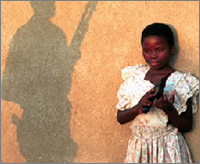 "Women and men: United to end violence against women" is the theme of this year’s International Women's Day which is observed at the United Nations on 5 March 2009 and celebrated internationally on 8 March. Credit: UNAIDS
"Women and men: United to end violence against women" is the theme of this year’s International Women's Day which is observed at the United Nations on 5 March 2009 and celebrated internationally on 8 March. Credit: UNAIDSTwo years ago today, UN bodies came together to form a joint initiative, “UN Action against Sexual Violence in Conflict.” The partnership now stands at twelve UN entities which seek to draw attention to the issue of sexual violence in conflict and the need to do more, to improve the quality of programming to address sexual violence, to increase the coordination of efforts for comprehensive prevention and response services, and to improve accountability as well as to respond effectively to the needs of survivors.
The UN Action initiative is designed to create greater awareness of these abuses and, ultimately, end sexual violence to make the world safer for women and girls.
Three main pillars
The first aspect of this initiative, country level action, involves country level support and efforts to build capacity and train advisers in gender-based violence programming and coordination, as well as support for joint UN programming in selected countries.
Second, “advocating for action”, raises public awareness and generates political will to address sexual violence as part of the broader campaign to “Stop rape now.” The third aspect is the creation of a knowledge hub on sexual violence in conflict and effective responses.
Stop rape now
Rape has deep roots in a historical absence of accountability and UN Action has helped catalyze a paradigm shift: insisting that sexual violence is recognized as a security threat that demands a security response, rather than simply an inevitable byproduct of war.
International Women’s Day
In 1977 the UN General Assembly adopted a resolution inviting Member States to proclaim a United Nations Day for Women's Rights and International Peace—International Women's Day—in recognition of the fact that securing peace and social progress and the full enjoyment of human rights and fundamental freedoms require the active participation, equality and development of women; and to acknowledge the contribution of women to the strengthening of international peace and security.
For women around the world, the symbolism of International Women's Day has a wider meaning: it’s an occasion to celebrate how far women have come in their struggle for equality and an opportunity to unite, network and mobilize for meaningful change.
Highlighting sexual violence on International Women’s Day
International Women's Day 2009 statements:
Statement by UN Secretary-General Ban Ki-moon (pdf, 25 kb)
Statement by UNAIDS Executive Director Michel Sidibé
Statement by WHO Director-General Dr Margaret Chan
Statement by UNESCO Director-General Koïchiro Matsuura (pdf, 61 Kb)
Statement by UNFPA Executive Director, Thoraya Ahmed Obaid
Statement by UNICEF Executive Director Ann M. Veneman
More from UNAIDS Cosponsors on International Women's Day:
Interview with WFP Head of Gender Unit Isatou Jallow
UNDP's special on the occasion of the International Women's Day 2009
UNODC's special on the occasion of the International Women's Day 2009
ILO celebration for International Women's Day 2009
World Bank's special on the occasion of the International Women's Day 2009
Cosponsors:
UNDP - UN Development Programme
UNFPA - United Nations Population Fund
UNHCR - UN High Commissioner for Refugees
UNICEF - United Nations Children Fund
WFP - World Food Programme
WHO – World Health Organization
Partners:
DPA - Department of Political Affairs
DPKO - Peacekeeping Best Practices
OCHA - Coordination of Humanitarian Affairs
OHCHR - United Nations Human Rights
UNIFEM - UN Development Fund for Woman
Feature stories:
HIV prevention and the uniformed services in CIS (08 October 2008)
Contact:
For more information on this campaign contact by email: anna.tarant@unifem.org
External links:

Feature Story
Costa Rica: Peer HIV prevention programmes to be promoted for young people
03 March 2009
03 March 2009 03 March 2009
The President of the Republic of Costa Rica, Mr Óscar Arias signing the HIV prevention and education agreement.
Young people in Costa Rica will be receiving information on HIV prevention and healthy lifestyles from their peers thanks to a new agreement signed in San Jose by the Government of Costa Rica and the United Nations.
The agreement establishes that young people, aged 15 – 25 years, will lead in sharing sexual health information among their peers in two provinces: Limón and Puntarenas. The young leaders will provide education on a wide range of issues such as modes of HIV transmission and how to use a condom.
UNAIDS Regional Director Dr César Núñez emphasized that only timely information and HIV prevention can stop the spread of HIV. “It is urgent to provide young people with HIV information and to include sexual education in the school curriculum, as well as to develop specific strategies for the population outside schools,” he said.
"It is urgent to provide young people with HIV information and to include sexual education in the school curriculum, as well as to develop specific strategies for the population outside schools."
UNAIDS Regional Director Dr César Núñez
The agreement was signed on 24 February 2009 by the President of the Republic Mr Óscar Arias and the Deputy Minister of Youth Karina Bolaños together with Dr César Núñez, UNAIDS Regional Director, Nils Kastberg, UNICEF Regional Director for Latin America and the Caribbean, Luis Mora, UNFPA Regional Adviser in Gender and Masculinities, and young people from the Limón and Puntarenas provinces.
A 2008 study carried out by UNFPA and UNICEF with support from UNAIDS showed that the majority of young people in Costa Rica were sexually active at the age of 16. The study also highlighted that there was lack of HIV information and knowledge among Costa Rican youth.
For that reason, President Arias, who received a Nobel Peace prize in 1987, emphasized on the occasion of the signing the need to speak about sexual education openly and without prejudices. “Talking about sex cannot continue to be taboo in Costa Rica,” he said.

The President of the Republic of Costa Rica, Mr Óscar Arias (centre) talking with the United Nations representatives that signed the agreement.
The study shows that in Limón only about 28% of the young people interviewed know how to use a condom correctly whereas in Puntarenas the percentage drops to about 17%. Furthermore, in both provinces, more than 50% of the adolescents find that asking a partner to use a condom could be interpreted as a sign of mistrust. Finally, 43% in both provinces think that a young girl carrying condoms in her purse is a woman with a “doubtful reputation.”
The agreement signed will look at strengthening the capacity of the health and education institutions as well as youth and adolescents in the country to promote HIV prevention. UNICEF, UNFPA and UNAIDS will provide technical and financial assistance to the programme which plans to directly benefit 73,000 adolescents.
This agreement is a direct result of the Meeting of Ministers of Education and Health to prevent HIV in Latin America and the Caribbean, that took place in Mexico in August 2008 ahead of the International AIDS Conference, when Ministers signed an historic declaration pledging to provide comprehensive sex education as part of the school curriculum in Latin America and the Caribbean.
Costa Rica: Peer HIV prevention programmes to be promoted for young people
Feature stories:
Leaders pledge to promote sexual health to stop HIV in Latin America and the Caribbean (03 August 2008)

Feature Story
Home Truths: Facing the facts on children, AIDS, and poverty
19 February 2009
19 February 2009 19 February 2009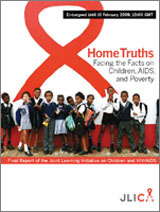
The report, “Home Truths: Facing the Facts on Children, AIDS, and Poverty” calls for fundamental shifts in global, regional and national responses to the epidemic’s impact on children, their families and communities.
Credit: JLICA
The global response to AIDS must be significantly reoriented to address the unmet needs of millions of children and their families in the worst affected countries, according to a new report by the independent Joint Learning Initiative on Children and HIV/AIDS (JLICA).
The report, “Home Truths: Facing the Facts on Children, AIDS, and Poverty” summarizes two years of research and analysis of AIDS policies, programmes and funding and calls for fundamental shifts in global, regional and national responses to the epidemic’s impact on children, their families and communities.
"Families are at the heart of the AIDS response,” said Michel Sidibé, Executive Director of UNAIDS. “Policies, programmes and funding must focus on providing universal access to HIV prevention, treatment, care and support for the family as a unit to ensure that both children and the adults who care for them get the essential services they need.”
The JLICA report outlines a clear and achievable action agenda to improve the scope and impact of services for children, their families and communities. Yet, experts point out that, while these JLICA-endorsed approaches are clearly supported by evidence and experience, setting a new direction for policy on children affected by HIV and AIDS will demand major shifts in both thinking and action.
Families are at the heart of the AIDS response. Policies, programmes and funding must focus on providing universal access to HIV prevention, treatment, care and support for the family as a unit to ensure that both children and the adults who care for them get the essential services they need.
Michel Sidibé, Executive Director of UNAIDS
Among the key recommendations highlighted in the report are the need to focus on children’s needs, not their orphan or HIV status when designing and implementing policies and programmes. More than 60% of children in southern Africa live in poverty. Singling out those directly affected by HIV is not only inefficient, but can also have undesirable effects -- such as stigmatization and abuse of those in need of help.
Health and social services, such as expanded access to HIV testing and treatment, should reach out to families as a whole. An effective response to AIDS requires the delivery of integrated, family-centred services in health, education and social welfare that are well-resourced and linked to communities.
The report also states that basic economic security can help families invest in children’s health and education, increase their use of available services, and pay for essentials such as food, medicine and transport to health facilities. Income transfer efforts, which place funds directly in the hands of families that need them, have demonstrated impressive results in improving child and family well-being in several African countries.
According to the report, urgent action is needed to address the social conditions and norms that render women and adolescent girls highly vulnerable to HIV infection. Therefore, the report calls for increased efforts to tackle behaviours and attitudes that protect or promote sexual abuse of women and girls.
JLICA is an independent alliance of researchers, implementers, policy-makers, activists and people living with HIV. JLICA partners and supporters include the Association François-Xavier Bagnoud – FXB International; Bernard van Leer Foundation; Bill & Melinda Gates Foundation; FXB Center for Health and Human Rights, Harvard University; Global Equity Initiative, Harvard University; Human Sciences Research Council, South Africa; Irish Aid; Netherlands Ministry of Foreign Affairs; UK Department for International Development; UNAIDS; and UNICEF, among many others.
Right Hand Content
Cosponsors:
External links:
Joint Learning Initiative on Children and HIV/AIDS (JLICA)
Publications:
Home Truths: Facing the Facts on Children, AIDS, and Poverty (pdf, 1.98 Mb)
Related

Feature Story
Third stocktaking report on children and AIDS
01 December 2008
01 December 2008 01 December 2008
The report, titled Children and AIDS: Third stocktaking report, was jointly prepared by UNICEF, the World Health Organization (WHO), the Joint United Nations Programme on HIV/AIDS (UNAIDS) and the United Nations Population Fund (UNFPA).
Early diagnosis and treatment can significantly improve the prospects for survival of newborn babies exposed to HIV, according to a report released today by four United Nations agencies.
The report, titled Children and AIDS: Third stocktaking report, was jointly prepared by UNICEF, the World Health Organization (WHO), the Joint United Nations Programme on HIV/AIDS (UNAIDS) and the United Nations Population Fund (UNFPA).
This report is the third review of progress on how AIDS affects children and young people since the Unite for Children, Unite against AIDS campaign was launched in October 2005 by UNICEF, UNAIDS and other partners with a commitment to be accountable for results.
Unite for Children, Unite against AIDS is a call to action around the impact of HIV and AIDS on children. It focuses on the needs of children in four key areas, known as the “Four Ps”: Preventing mother-to-child transmission of HIV; Provision of paediatric treatment; protection and support of children affected by AIDS; and prevention of infection among adolescents and young people.
This 2008 Stocktaking Report examines data on progress, emerging evidence, and current knowledge and practice for children as they relate to the four programme areas. The report also calls for actions in the next one to three years that can significantly improve prospects for children and women affected by AIDS. These initiatives involve changes in thinking, as well as concrete actions.
Prevention of mother-to-child transmission of HIV
Most pregnant women diagnosed with HIV do not have access to essential care and treatment, including antiretroviral therapy for their own health, to further reduce HIV transmission and prevent orphaning, according to the new report. Far too few pregnant women know their HIV status. In 2007, only 18% of pregnant women in low- and middle-income countries where data were available were tested for HIV, and of those who tested positively for HIV, only 12% were further screened to determine the status of the HIV disease and the type of treatment they require. Addressing mothers’ needs for diagnosis and treatment will improve not only their own overall health but their children’s survival.
Providing paediatric treatment and care
The report found that children under the age of one are not getting diagnosed and are missing out on treatment. As a result, large numbers of very young children are dying every year due to AIDS-related illnesses. Recent evidence found mortality levels reduced by up to 75% when infants were tested early and treated within the first 12 weeks of life. In 2007, however, only 10% of children born to HIV-positive women were tested before they were two months old. Therefore, the report advocates for increased testing to enable appropriate treatments to begin as early as possible.
Protection and care for children affected by AIDS
There is growing evidence in support of programming that addresses the wider context of children’s vulnerability as the basis to assist those children, families and communities directly affected by AIDS. The stocktaking report highlights that responses should be AIDS-sensitive and not AIDS-exclusive. While support to strengthen family and community responses to the epidemic remains a high priority, there is recognition of the need to support national protection systems, including government capacity to address child welfare generally.
Preventing infection among adolescent and young people
Significant numbers of young people continue to be infected with HIV each year, and girls in sub-Saharan Africa, in particular, remain vulnerable – 45% of all new infections occur in the 15–24 year-old age group. The new report argues that urgent attention is needed to address the greater HIV risks to girls of multiple concurrent partnerships, intergenerational sex, transactional sex and gender-based violence.
In countries with low-prevalence and concentrated epidemics, HIV prevention responses focused on adolescent risk behaviours – including injecting drug use, unprotected sex between males, and sex in exchange for gifts and money – are a priority. There is strong consensus that combination prevention programmes – integrating behavioural, structural and biomedical approaches – work.
This year’s report is accompanied by ‘Children and AIDS: Country Fact Sheets’, which present key statistical data on the “Four Ps” for 157 countries.
Third stocktaking report on children and AIDS
Cosponsors:
Press centre:
Early HIV Testing and Treatment Can Save Newborn Lives, New U.N. Report Released on World AIDS Day States (pdf, 80 Kb)
Feature stories:
Second stocktaking report on children and AIDS (03 April 2008)
Signs of progress in global response to Children and AIDS (16 January 2007)
External links:
Unite for Children, Unite against AIDS
Publications:
Children and AIDS: Third stocktaking report (pdf, 1.9 MB)
Children and AIDS: Third stocktaking report Summary (pdf, 2.71 MB)
Related
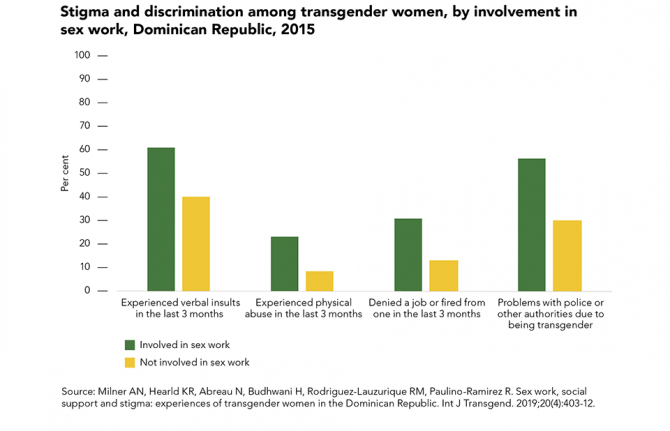 Transgender sex workers face frequent abuse
Transgender sex workers face frequent abuse

29 March 2022
 Many key populations avoid health services
Many key populations avoid health services

21 February 2022

Feature Story
UNAIDS welcomes Mrs Carla Bruni-Sarkozy’s Ambassador role for Global Fund
01 December 2008
01 December 2008 01 December 2008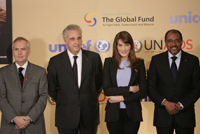
(from left) Associate Director of UNICEF’s Programme Partnerships, Pascal Villeneuve, Executive Director of the Global Fund, Michel Kazatchkine, Mrs Bruni-Sarkozy, UNAIDS Deputy Executive Director Michel Sidibé. Credit: élysée Palace
Mrs Carla Bruni-Sarkozy today took up her appointment as Ambassador for the Protection of Mothers and Children against HIV/AIDS of the Global Fund to Fight AIDS, Tuberculosis and Malaria (the Global Fund) at an event in Paris.
Mrs Carla Bruni-Sarkozy began her new mission on this the 20th anniversary of World AIDS Day, signing a letter of agreement with Executive Director of the Global Fund, Michel Kazatchkine. UNAIDS Deputy Executive Director Michel Sidibé and the Associate Director of UNICEF’s Programme Partnerships, Pascal Villeneuve were also present and signed a statement offering their full support for this new partnership.
Mr Sidibé spoke of the significance of Mrs Carla Bruni-Sarkozy’s appointment, “I know that Madam Ambassador will help raise the voices of mothers and their families around the world who are affected by AIDS.”
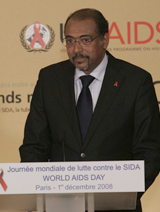
Mr Sidibé spoke of the significance of Mrs Carla Bruni-Sarkozy’s appointment, “I know that Madam Ambassador will help raise the voices of mothers and their families around the world who are affected by AIDS.” Credit: élysée Palace
“Madame Ambassador, thank you for your commitment. Your leadership will help build bridges across communities in France and abroad,” said Sidibé.
This evening Mr Sidibé will attend a World AIDS Day event at Musée de l'Homme hosted by the President of France Nicolas Sarkozy which includes a book launch and multimedia exhibition organized by Magnum Photos and the Global Fund. Tribute will be paid to Nobel Prize winner Françoise Barré-Sinoussi.
Earlier today the United Nations Secretary-General Ban Ki-moon announced the appointment of Mr Sidibé as the next Executive Director of the Joint United Nations Programme on HIV/AIDS (UNAIDS).
UNAIDS welcomes Mrs Carla Bruni-Sarkozy’s Ambassa
Cosponsors:
Partners:
The Global fund to Fight AIDS, TB and Malaria
Press centre:
Mr Michel Sidibé appointed UNAIDS Executive Director (01 December 2008)
UNAIDS commends HIV scientists for Nobel Prize win (06 October 2008)
Multimedia:
Speeches:
Read remarks by Mr Michel Sidibe, Deputy Executive Director of UNAIDS, World AIDS Day 2008. (pdf, 96 Kb)
Related
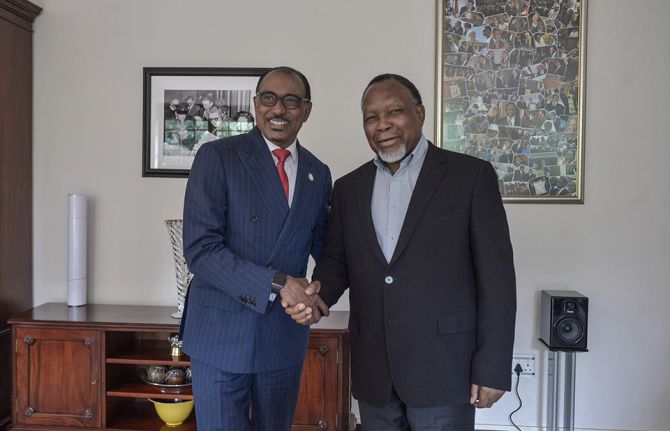 Keeping up the momentum in the global AIDS response
Keeping up the momentum in the global AIDS response

24 April 2019
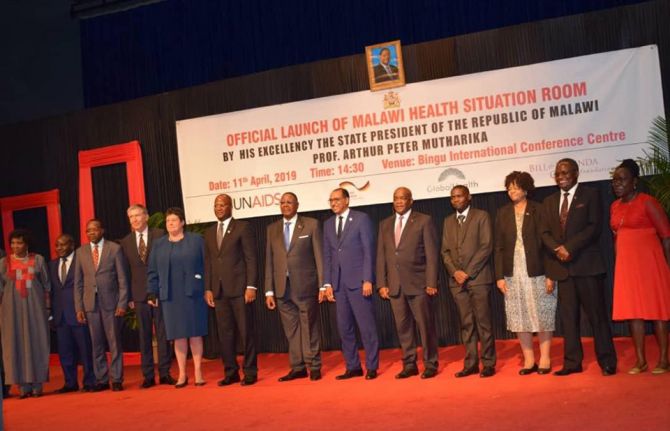 Malawi launches its health situation room
Malawi launches its health situation room

12 April 2019
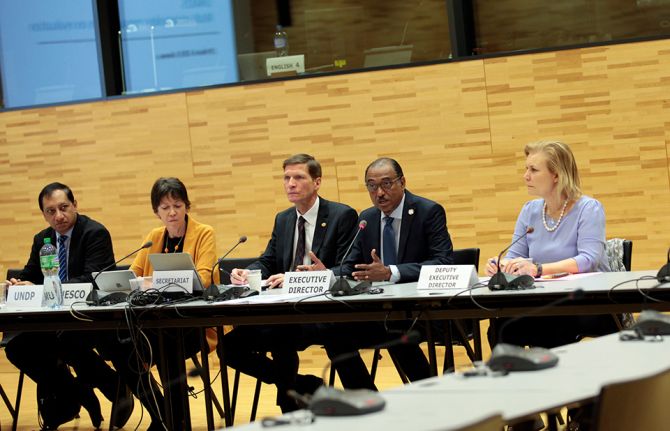 Learning lessons on evaluation
Learning lessons on evaluation

02 April 2019

Feature Story
4th Global Partners Forum on Children Affected by HIV and AIDS
08 October 2008
08 October 2008 08 October 2008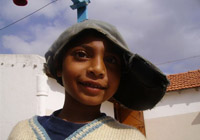
200 delegates from 42 countries met in Dublin, Ireland on the 6th and 7th October 2008 for the 4th Global Partners Forum on Children affected by HIV and AIDS.
Credit: UNAIDS
In order to review progress, set global priorities, and make commitments for children affected by HIV, 200 delegates from 42 countries including leaders in government, civil society and UN agencies met in Dublin, Ireland on the 6th and 7th October 2008 for the 4th Global Partners Forum on Children affected by HIV and AIDS.
The Global Partners Forum was established in 2003 to build momentum in fulfilling global commitments for children affected by HIV as was stated in the United Nations General Assembly 2001 Declaration of Commitment on HIV/AIDS and the Millennium Development Goals.
The current definition of children affected by HIV (UNICEF and UNAIDS) are those under 18 years of age who are living with HIV or have lost one or both parents due to AIDS or whose survival, well-being or development is threatened or altered by HIV. However, in hyperendemic countries where HIV prevalence exceeds 15% most children are directly or indirectly affected by AIDS.
According to the latest UNAIDS report on the global AIDS epidemic, the number of children living with HIV has increased from 1.6 million in 2001 to 2 million in 2007, 90% of which live in sub-Saharan Africa where nearly 12 million children under 18 have lost one or both parents to AIDS.
The 4th Global Partners Forum, co-hosted by the Government of Ireland, UNICEF and UNAIDS, aimed to renew the commitment of international partners to accelerate support for the protection and care of children affected by HIV, report progress and highlight good practices identified since the 3rd Global Partners Forum in 2006, as well as to produce a participant-endorsed communiqué defining priorities for the next two years.
The meeting was opened by the Minister of State for Overseas Development, Peter Power, T.D. and a keynote address was given by An Taoiseach Brian Cowen, the Prime Minister. Other keynote speakers included the First Lady of Honduras Xiomara Castro de Xelaya, and HIV activist and singer/songwriter Annie Lennox. The meeting differed from many others by the presence and active contribution of children from western and eastern Europe, Asia, Africa, and Latin America, including some infected and affected by HIV.

Despite efforts to care and protect vulnerable children, exclusion, stigma, and discrimination of children affected by HIV continue to be common challenges in most countries.
Credits: UNAIDS
Children’s vulnerability to the epidemic was captured in the evidence-based synthesis paper presented at the forum by UNICEF to promote awareness and to inform the discussions. Priority issues were further elaborated during panel discussions addressing topics such as family-centered care, strengthening national responses for the most vulnerable children, and quality programming at the community level. Although it was acknowledged that there has been progress in global efforts for children affected by HIV, it was also recognized the severe remaining constraints which make it impossible for some children to realize their human rights.
Evidence from the synthesis paper and discussions at the forum, including contributions from the children, highlighted that despite efforts to care and protect vulnerable children, exclusion, stigma, and discrimination of children affected by HIV continue to be common challenges in most countries. Stigma has been cited as a reason for children not being enrolled in school, receiving care, or being adequately served by programmatic responses.
Attending school is essential to the development of skills and acquisition of knowledge to enable young people to reach economic and social fulfillment. Schools also have the protective effect of educating children about HIV and how to avoid infection. However, HIV poses several constraints that prevent children from going to school or forces them to an early drop out. For instances, many children become responsible for the care of their siblings and other family members when parents are debilitated by poor health. The need to provide food or generate income prevents these children from attending school while at the same time increasing their vulnerability to HIV. This vulnerability represents part of a vicious cycle: their circumstances put them at high risk for exploitation and abuse, and therefore exposure to HIV.
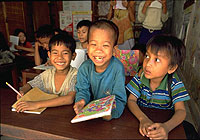
Schools also have the protective effect of educating children about HIV and how to avoid infection. Credit: UNAIDS
Evidence presented at the 4th Global Partners Forum showed that families are bearing the bulk of the costs for infected children. Therefore, families under stress through chronic poverty, labor constrains and facing the impact of illness and death, need external assistance. In response to these challenges, a number of countries are beginning to scale up cash transfers, as part of a social protection package, to alleviate poverty and to increase access to essential services. Such social protection has been shown to be feasible even in resource-constrained countries with high HIV burdens.
Even though the main mode of HIV transmission, and the extent of HIV-related vulnerability among children may differ from region to region, the response challenges were seen to be the same, such as fear of HIV testing by parents, lack of access to treatment for children, and lack of social and psychological support.
The messages of the meeting and the action points were summarized by a communiqué which was presented, debated and adopted during the plenary. It recognized that more information and data were now available and the reality on the ground is better understood to inform action. Based on the evidence presented, the communiqué highlighted four priority action points: the well-being of children and parents infected by HIV; strengthening families and communities as units of prevention, treatment, care and support; increasing effectiveness of programs, services and resources; and human rights for vulnerable children.
Participants committed themselves to implementing the action points of the communiqué, to monitor their progress, and to hold themselves accountable to children affected by HIV. UNAIDS committed to work with governments, the UN family and civil society to put children and families at the heart of the response to HIV through efforts at global, regional and country level.
4th Global Partners Forum on Children Affected by
Cosponsors:
Partners:
Unite For Children. Unite Against AIDS
Press centre:
Speech by Paul De Lay, UNAIDS Director, Epidemic Monitoring and Prevention Department - 4th Global Partners Forum on Children affected by HIV (pdf, 42 kb)
Read final communique (pdf, 53 kb)
Publications:
2008 report on the global AIDS epidemic
Children and AIDS - Second Stocktaking report (pdf, 2.5 Mb)

Feature Story
Second stocktaking report on children and AIDS
03 April 2008
03 April 2008 03 April 2008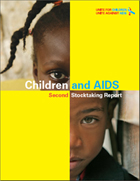
For millions of children, AIDS has starkly altered the experience of growing up. In 2007, it was estimated that 2.1 million children under age 15 were living with HIV and 15 million children had lost one or both parents to the virus . Millions more have experienced deepening poverty, school dropout and discrimination as a result of the epidemic.
Nonetheless, important progress has been made in reducing the spread of AIDS since UNICEF and UNAIDS issued a Call to Action to Unite for Children, Unite against AIDS in October 2005, according to the new ‘Children and AIDS: Second stocktaking report’.
The report, co-authored by UNICEF, UNAIDS and WHO reviews progress made on children and AIDS in four key areas: Preventing mother-to-child transmission of HIV; Provision of paediatric treatment; protection and support of children affected by AIDS; and prevention of infection among adolescents and young people.
Prevention mother-to-child transmission of HIV
The ‘Children and AIDS: Second stocktaking report’ highlights that improvement in preventing mother-to-child transmission of HIV (PMTCT) has seen the most significant gains. In 2005, only 11% of women living with HIV received drugs to prevent transmission of the virus to their children; however by the end of 2006 that figure had risen to 31%.
In 2006, Botswana reported that only 7% of infants born to HIV-positive mothers became infected with HIV, compared to 35–40% before the PMTCT programme began.
However, most of the 2.1 million children under 15 living with HIV in 2007 were infected before their birth, during delivery or while breastfeeding.
Provision of paediatric treatment
Advances in paediatric care have been equally dramatic. In 2005, only 70,000 children were receiving antiretroviral drugs (ARVs) but in 2006, that number had risen to 127,000 – a 70% increase in one year.
In South Africa , mortality was reduced by 75% in HIV-positive infants who were treated before they reached 12 weeks of age.
Protection and support of children affected by AIDS
The stocktaking report also show progress on the protection and care for children affected by AIDS in many countries and on their access to social services. Progress has also been made in school enrolment rates for children who have lost both parents to the disease, although children affected by HIV are still more likely to fall behind in school and to live in poorer households.
Prevention of HIV infection among adolescents and young people
The report highlights the urgent need for better evidence-based information on the behaviours of adolescents and young people to improve and focus HIV prevention efforts to where they will be most effective. It also outlines the importance of involving young people in the design, implementation and monitoring of HIV prevention programmes for young people.
In Latin America and the Caribbean, MTV has been working with UNICEF to produce ‘Sexpress Yourself’, a one-hour special in which young people talk openly and honestly about sex, sexuality, gender roles and HIV.
In India, focused peer outreach programmes, youth-friendly health services and communication activities in 43 high-prevalence districts are helping to reach adolescents, young people and especially girls at high risk.
While the news is mixed, the report argues that achieving an AIDS-free generation is possible. For that, the report calls for action to strengthen communities and families whose role is crucial to every aspect of a child-centred approach to AIDS; reinforce health, education and social welfare systems to support children affected by AIDS; integrate services for PMTCT programmes; and consolidate data in order to document advances and shortfalls and strengthen commitment.
Second stocktaking report on children and AIDS
Cosponsors:
Press center:
Feature stories:
Signs of progress in global response to Children and AIDS (16 January 2007)
Publications:
Children and AIDS - Second Stocktaking report (pdf, 2.45 Mb)
Related
 “Who will protect our young people?”
“Who will protect our young people?”

02 June 2025

Feature Story
President of India unites for children
30 October 2007
30 October 2007 30 October 2007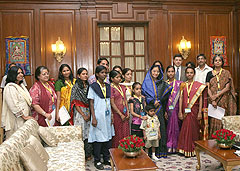
President of India Pratibha Patil met representatives
from UNAIDS, UNICEF, HIV positive networks and
government officials in New Delhi.
The Indian President, Pratibha Patil met representatives from UNAIDS, UNICEF, HIV positive networks and government officials in New Delhi to mark the second anniversary of the UNICEF/UNAIDS Unite for Children, Unite Against AIDS campaign. The President of India pledged her full support to the campaign and to addressing myths and misconceptions around HIV that are driving stigma and discrimination.
“Raising awareness is the key to fight the stigma and discrimination faced by the HIV positive people especially women and children,” President Patil said.
As part of the event, children and their mothers living with HIV shared their life experiences with The President. President Patil also met with peer educators who presented her with artwork of their messages on stigma and discrimination.
Anand*, a child living with HIV presented Suraksha Bandhan (a blue and red band in which the blue colour represents children and red represents AIDS) to President Patil as a sign of solidarity in the response to AIDS.
Unite for Children Unite Against AIDS is the largest campaign mounted to bring the world’s attention to the global impact of AIDS on children and young people. It also recognizes and addresses the needs of their caregivers. It offers urgent and specific interventions and calls to action. Launched in October 2005, UNICEF and UNAIDS are leading the initiative along with partners from all sectors of society, including governments, NGOs, academic institutions, faith-based groups, community groups and youth and sporting organizations.
Speaking on the occasion of the meeting with the President of India, Dr Dennis Broun, UNAIDS Country Coordinator for India, said that “since its launch two years ago, the campaign has transformed the lives of thousands of children and their families.”
“Great progress has been achieved on prevention and early detection of HIV infection in children, access to care and treatment and the fight against discrimination, notably in schools. Many famous personalities have supported this fight and their engagement has been crucial. There is more to be done and the whole UN family will continue to respond to AIDS in India,” he said.
The number of people living with HIV in India is estimated to be 2.0- 3.1 million. Some 70,000 children below the age of 15 are estimated to be living with HIV in the country.
Links:
Visit the Unite for Children Unite Against AIDS web site
Visit the UNAIDS India web site

Feature Story
Progress and challenges for Botswana
18 October 2007
18 October 2007 18 October 2007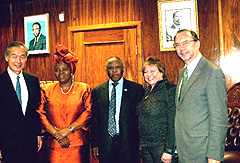
From left to right: Dr Tadatakai Yamada, Botswana
Minister of Health Professor Professor Sheila Tlou,
HE President Festus Mogae, Ms. Ann Veneman
and Dr Peter Piot.
With 25% of adults aged 15-49 estimated to be living with HIV, Botswana has one of the world’s highest HIV prevalence rates. Prevalence rates are particularly high among pregnant women – estimated at more than 32%.
Despite these continuing challenges, the country has made significant progress in its response to AIDS. The first African country to embark on a programme of rolling out free antiretrovirals to all its citizens living with HIV in need, Botswana dedicates considerable domestic resources to HIV. In addition to treatment, it has made impressive strides in preventing mother-to-child HIV transmission (down to 3%) and caring for children orphaned by AIDS. The country has also been a leader in expanding voluntary HIV testing and counselling – the offer of HIV testing has been routine in all health care settings since 2004.
A key catalyst for progress in Botswana’s AIDS response has been the establishment in 2000 of the African Comprehensive HIV/AIDS Partnership (ACHAP). This innovative collaboration to improve access to needed HIV services is a country-led public/private development partnership between the Government of Botswana, the Bill & Melinda Gates foundation and pharmaceutical company Merck & Co., Inc. and the Merck Company Foundation.
ACHAP was set up to support and enhance Botswana’s national HIV response, and works to scale up HIV prevention, expand access to HIV counselling and testing, support the national AIDS treatment programme, and to advocate for and empower communities and people living with HIV. ACHAP was instrumental in the establishment and roll-out in 2002 of Botswana’s national antiretroviral program, which as of July 2007 was providing treatment to more than 90,000 people. The partnership has also supported the training of over 7,000 health workers to improve and develop medical and management skills for AIDS programmes.
In their visit to the country, the joint mission met with HE President Festus Mogae and other leaders in Botswana’s national AIDS response. Dr. Piot commended the President, who chairs the National AIDS Council, for his leadership on AIDS, and underscored the commitment of UNAIDS and other partners to continue collaboration with Botswana. Dr Piot and Ms Veneman both pledged the United Nations’ continued support of Botswana’s HIV response. The delegation also visited hospitals and clinics in the districts of Francistown and Chobe, both of which are situated on high transit transport routes and have seen significant expansion over the last few years of voluntary HIV testing and counselling, treatment, care and support services.
“Botswana has shown an exceptional response to AIDS at the highest levels, and its progress in treatment access is an example to the world,” said UNAIDS Executive Director Peter Piot. “This energy must now inspire a dramatic scale up of comprehensive HIV prevention programmes for a sustainable, long-term AIDS response.”
Links:
Visit the ACHAP web site
UNAIDS Botswana country profile
Related

Feature Story
Aussie stars support loveLife project
12 September 2007
12 September 2007 12 September 2007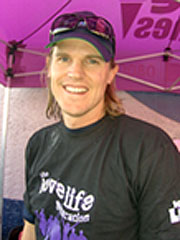
Nathan Bracken said: "By visiting projects
to raise AIDS awareness, hopefully we
can play a role in the ICC's partnership
with UNAIDS and UNICEF to reduce
stigma around HIV.
Nathan Bracken and Brad Hodge took time out of their preparations for the ICC World Twenty20 2007 to visit a project as part of the ICC’s work with UNAIDS and UNICEF to raise awareness on AIDS.
They visited the loveLife Orange Farm Y-Centre, part of South Africa's national HIV prevention program for youth, to meet young people who both volunteer and attend the project.
Nathan Bracken said: "By visiting projects to raise AIDS awareness, hopefully we can play a role in the ICC's partnership with UNAIDS and UNICEF to reduce stigma around HIV. It is important that projects like loveLife provide opportunities for young people to make informed choices about the way they live their lives and help halt the spread of HIV.
"loveLife Y Centres provide hubs for regional networks of franchise holders, adolescent friendly clinics and outreach programs. They serve as best-practice sites for youth leadership development and adolescent clinical services; training venues for groundBREAKER and loveLifestyle programs; and provide trained facilitators to support the loveLife Games and other outreach programs.
Brad Hodge: "Sport is a great way of inspiring young people and teaching them skills which they can use in all areas of their life. It has been very moving to see how loveLife provides opportunities for young people to develop their confidence by taking part in a range of team sports."
Links:
Read more on the ICC Twenty20 World Championships
Read more on Unite for Children: Unite against AIDS


